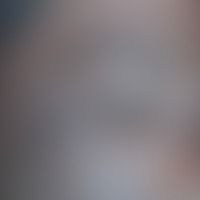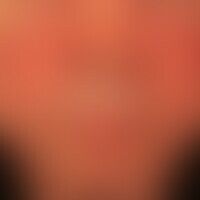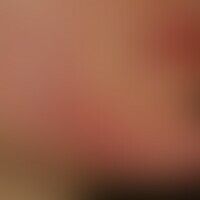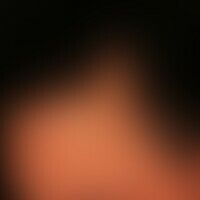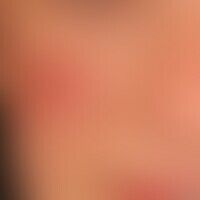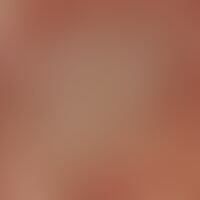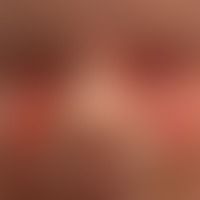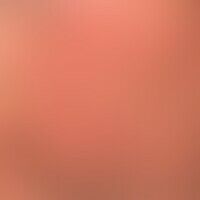Image diagnoses for "Face"
326 results with 947 images
Results forFace
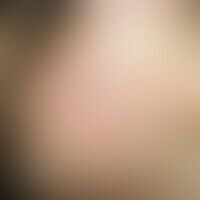
Acne infantum L70.40
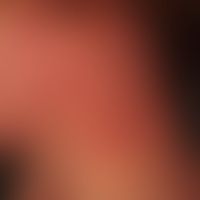
Epidermolysis bullosa junctionalis generalized intermediaries (non-herlitz) Q81.1
Epidermolysis bullosa dystrophica dominans: 35-year-old female patient, with extensive scarring blister formation after banal traumas (e.g. under plasters, or under pressure). First manifestation in the first months of life. recurrent formation of basal cell carcinomas.
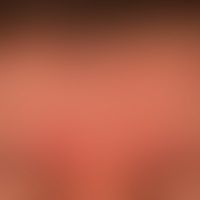
Seborrheic dermatitis of adults L21.9
dermatitis, adult seborrhoeic: partly small spots, partly blurred erythema with small lamellar scaly deposits. slight feeling of tension. no significant itching. skin changes have existed for years to varying degrees. in summer, clearly improved or completely disappeared.

Leprosy (overview) A30.9
Type I leprosy reaction "upgrading reaction": in a patient with Boderline lepromatous leprosy, characterized by an inflammatory flare-up of facial plaques.
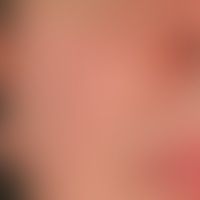
Folliculitis (superficial folliculitis) L01.0
folliculitis (superficial folliculitis): single follicular inflammatory papules (so-called pimples) occurring at regular intervals. only slight pressure pain. spontaneous scarless healing after 10 - 14 days.

Contagious impetigo L01.0
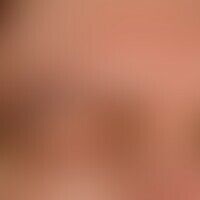
Alopecia areata (overview) L63.8
Alopecia areata. 6 months of persistent focal alopecia of the right eyebrow in a 40-year-old patient with alopecia areata, Hashimoto's thyroiditis and atopic eczema.
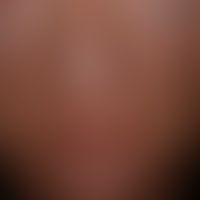
Amiodarone hyperpigmentation T78.9
Amiodarone hyperpigmentation: grey-blue hyperpigmentation after long-term application of the preparation due to tachyarrhythmia, partly splashlike, partly flat grey-blue discolouration.
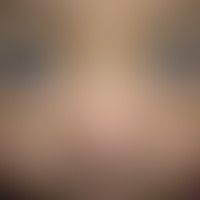
Contagious mollusc B08.1
Molluscum contagiosum: multiple mollusca contagiosa in the face of an Ethiopian boy.

Sebaceous hyperplasia senile D23.L
sebaceous gland hyperplasia, senile. large, isolated, skin-coloured to yellowish, soft-elastic nodules (phymogenesis - see also rhinophyma) on the cheek of a 66-year-old man. on lateral view lobular structure with bumpy surface structure. pronounced actinic elastosis with beginning M. Favre-Racouchaud.
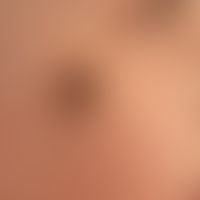
Naevus melanocytic common D22.-
Nevus melanocytic common: Copoun-type melanocytic nevus existingsince early childhood.
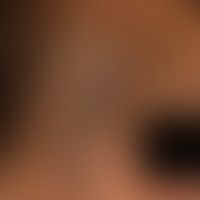
Nevus of Ota D22.30
Naevus fuscocoeruleus ophthalmomaxillaris. Irregularly limited, planar, brown to blackish blue, half-sided pigmentation. No clinical symptoms.
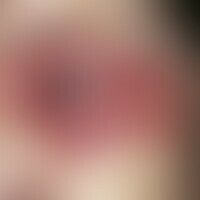
Psoriasis vulgaris L40.00
psoriasis vulgaris. localized psoriasis. no further foci! chronic dynamic, red, rough plaque covering the entire left orbital region. in addition, in the 60-year-old woman, discrete, red, slightly scaly plaques have existed for several years on the elbows, knees, sacral region, rima ani, scalp and ears (retroauricular accentuation).
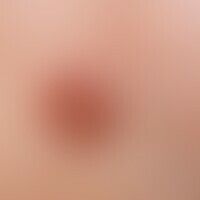
Basal cell carcinoma nodular C44.L
Basal cell carcinoma, nodular, sharply defined, shiny, smooth tumor interspersed with bizarre "tumor vessels", which are particularly prominent in this nodular basal cell carcinoma and play an important role in the diagnosis.
